Eco-friendly baby diapers designed for sensitive skin combine environmental awareness with gentle materials. These diapers typically feature natural, hypoallergenic fibres that prevent irritation.
Choosing the right diaper for your baby is crucial, especially when dealing with sensitive skin. Parents are often concerned about the chemicals and materials used in conventional diapers, which can lead to rashes and discomfort. Eco-friendly diapers present a solution that is kinder to your baby’s skin and the environment.
Made from sustainable materials without harsh chemicals, these diapers reduce the risk of allergic reactions and skin issues. They also contribute to a smaller carbon footprint, making them an excellent choice for environmentally conscious families. With an array of options available, finding a diaper that is both soft on your baby’s skin and eco-friendly has never been easier. Opting for these products not only protects your baby’s health but also supports a more sustainable future.
Introduction To Eco-friendly Baby Diapers
Eco-friendly baby diapers are a gentle choice for the planet and sensitive baby skin. Parents are turning to these sustainable options to reduce their environmental impact. Eco-friendly diapers use materials that are biodegradable and free from harsh chemicals. This makes them kind to the earth and to our little ones’ delicate skin.
Understanding Eco-friendly Diapers
Eco-friendly diapers differ from traditional ones in many ways. They are made with natural materials like bamboo, cotton, or other plant-based fibres. These diapers minimise waste and are often produced with sustainable practices.
- Biodegradable materials help reduce landfill waste
- Free from chlorine, dyes, and latex
- Often use plant-based plastics
The Importance Of Choosing Gentle Diapers For Sensitive Skin
Babies’ skin is thin and absorbs substances easily. Using gentle diapers prevents irritation and allergies. Eco-friendly options provide a safe, soft barrier that doesn’t harm or irritate. Parents can rest assured that their baby’s skin is protected with the purest materials.
| Feature | Benefit |
| Natural materials | Reduce the risk of skin irritations |
| Hypoallergenic qualities | Safe for most sensitive skin types |
The Impact Of Traditional Diapers On The Environment
In recent years, concerns about the environmental toll of disposable diapers have soared. They are a staple in nurseries across the globe but come at a high ecological price. Traditional diapers often use plastic and chemicals, harming our planet. Here, we’ll delve into two significant aspects of how disposable diapers affect the environment.
Analysing The Carbon Footprint Of Disposable Diapers
Disposable diapers contribute to large carbon emissions. The entire lifecycle, from production to disposal, generates a substantial carbon footprint. This includes the extraction of raw materials, manufacturing processes, and transportation.
- Diapers often use wood pulp and plastic
- High energy consumption in production is common
Waste Management Challenges Of Non-biodegradable Diapers
Every year, millions of disposable diapers end up in landfills. Non-biodegradable elements in diapers can take up to 500 years to decompose. This results in:
- Long-term waste accumulation
- Potential soil and water contamination
Waste management systems struggle to keep up with the constant influx of diaper waste. Recycling options for traditional diapers are limited:
- Most components are not recyclable
- Specialised facilities for recycling are scarce
Health Concerns With Standard Diapers
Parents want to protect their baby’s skin. But some diapers may harm more than help. This article will explore why some diapers might not be the best choice for sensitive skin.
Chemical Composition Of Traditional Diapers
Traditional diapers are full of materials that might harm your baby’s skin.
- Dioxins: Bleaching diapers produces these toxins.
- Fragrances: These can cause allergies and discomfort.
- Phthalates: They can disrupt hormones and health.
Link Between Conventional Diapers And Skin Irritation
The wrong diapers may make a baby’s skin red and itchy. Diaper rash is a common issue.
Causes of diaper rash:
| Material | Result |
| Plastic | Traps moisture |
| Fragrance | Causes irritation |
| Dyes | Leads to rashes |
Benefits Of Going Green With Baby Diapers
As parents, we often seek the best for our little ones, especially when it involves their health and the environment. Eco-friendly baby diapers offer a compelling solution, teeming with benefits that transcend mere functionality. Embracing green diapers is a step toward sustainability, without compromising your baby’s comfort and well-being.
Reducing Your Baby’s Carbon Footprint
Eco-friendly diapers are made from biodegradable materials. These materials break down much faster than traditional diapers. By choosing green diapers, you actively reduce waste and preserve natural resources. This helps in maintaining a healthier planet for future generations.
- Less landfill waste due to biodegradable materials
- Lower plastic usage reduces pollution and energy consumption
- Resource conservation through sustainable manufacturing practices
Promoting Better Skin Health For Babies
Eco-friendly baby diapers are gentle on the skin, making them an ideal choice for babies with sensitive skin. These diapers are free from chemicals and fragrances that often cause irritation and diaper rashes. The use of natural materials not only prevents potential allergens but also promotes better skin health.
| Eco-Friendly Diapers | Benefits for Skin |
| Chemical-free | Reduces risk of skin irritation |
| Natural fibers | Enhances breathability and comfort |
| Hypoallergenic properties | Lowers chances of diaper rash |
Parents can rest assured that choosing green diapers directly contributes to the well-being of their baby’s skin. Transitioning to eco-friendly options creates a win-win situation, where the health of your baby and the earth are both prioritized.
Materials And Ingredients In Eco-friendly Diapers
Eco-friendly baby diapers are a breath of fresh air for both the environment and your little one’s delicate skin. Choosing the right materials and ingredients is crucial for their comfort and health. Eco-friendly diapers use sustainable resources that are gentle on the planet and your baby. Let’s dive into what makes these diapers a smart choice for mindful parents.
Natural And Organic Materials Used
Eco-friendly diapers prioritize natural and organic materials. These are renewable and often biodegradable. Here’s a glimpse of what you might find in eco-friendly diapers:
- Bamboo: This plant is fast-growing and requires no fertilizer, making it a sustainable choice.
- Organic cotton: Grown without harmful chemicals, organic cotton is soft and breathable.
- Cornstarch: An alternative to plastic, it’s used in moisture barriers and is compostable.
These materials help reduce diaper rash and keep your baby comfy. Eco-friendly diapers do not contain fragrances, latex, or petroleum-based lotions.
Understanding Hypoallergenic Components For Sensitive Skin
Hypoallergenic diapers are designed to minimize the risk of allergies. They’re free from allergens that could irritate sensitive skin. Here is what makes eco-friendly diapers hypoallergenic:
- No chlorine: Chlorine-free to prevent harmful dioxins that cause skin reactions.
- Fragrance-free: Avoids synthetic fragrances that can lead to diaper rash.
- Latex-free: Reduces the chance of allergic reactions.
Each component is carefully chosen to ensure your baby’s skin stays safe and irritation-free. Parents can feel confident about wrapping their babies in these skin-friendly options.
Types Of Eco-friendly Diapers
As parents seek the best for their babies, the world of eco-friendly diapers has grown. Diapers for sensitive skin must not only be gentle but also environmentally considerate. We explore options designed with both baby and Earth in mind.
Comparing Biodegradable, Compostable, And Cloth Diapers
Eco-friendly diapers come in varied forms, each with a unique approach to sustainability and comfort.
| Type | Biodegradable | Compostable | Cloth |
| Materials | Plant-based fibers | Organic materials | Reusable fabrics |
| Breakdown | Naturally in landfills | In industrial facilities | N/A – Wash and reuse |
| Skin Sensitivity | Low risk | Varies | Low if washed well |
Pros And Cons Of Each Type For Sensitive Skin
- Biodegradable Diapers:
- Pros:
- Break down faster than regular diapers
- Gentle materials reduce rash
- Cons:
- Some brands are less absorbent
- Usually cost more
- Pros:
- Compostable Diapers:
- Pros:
- No landfill waste if composted properly
- Eco-friendly materials
- Cons:
- Require specific composting facilities
- Not all are skin-friendly
- Pros:
- Cloth Diapers:
- Pros:
- Reusable, reducing waste
- Control over detergents for sensitive skin
- Cons:
- More laundry to do
- Initial investment higher
- Pros:
How To Choose The Right Eco-friendly Diapers
Expectant and new parents today face the important decision of selecting the best diapers for their babies. It’s not just about comfort and preventing diaper rash anymore. Now, they’re taking a step further—focusing on the planet’s health with eco-friendly options for the youngest members of the family. This guide will help navigate through the world of eco-friendly baby diapers suitable for sensitive skin, ensuring your baby stays dry, comfy, and free from harmful chemicals while also protecting the environment.
Assessing Diaper Fit And Absorbency
When selecting the ideal diaper, two critical aspects to consider are fit and absorbency. These directly correlate with the baby’s comfort and the prevention of leakages. Here are ways to assess:
- Measure the baby’s weight and size to match the diaper’s size chart.
- Look for adjustable features such as elastic waistbands or resealable tabs.
- Choose diapers with high absorbency layers that can handle both liquid and solid waste effectively.
- Test different brands to find the best fit and absorption for your baby’s needs.
Evaluating Environmental Certifications And Standards
Next, verify the environmental friendliness of diapers through certifications and standards. This ensures that the diapers you choose not only care for your baby’s skin but also for the environment. Consider these checkpoints:
| Certification | Description | What It Means |
| OEKO-TEX | Tested for harmful substances. | The product is skin-friendly and safe. |
| Biodegradable | Capable of being broken down. | Less landfill impact. |
| Compostable | It can decompose in composting conditions. | Turns to beneficial compost. |
| FSC Certified | Sustainable forestry practices used. | Responsible for wood and paper use. |

To make an informed decision, research the certifications each brand holds. Choose diapers that promote sustainable resources, avoid toxins, and reduce carbon footprint. By ensuring these elements are accounted for, your choice helps safeguard both your baby’s future and the planet they will inherit.
Life Cycle Analysis: From Production To Disposal
Understanding the Life Cycle Analysis of eco-friendly newborn diapers reveals the impact on our planet. This analysis considers each stage – from production to disposal – to ensure we choose the best options for our babies and the environment.
Sustainability In The Manufacturing Process
Eco-friendly diapers start with conscious choices in raw materials and energy use. Manufacturers often use:
- Bamboo grows quickly and doesn’t need pesticides or fertilizers.
- Organic cotton is free from harmful chemicals and gentler on sensitive skin.
- Biodegradable materials like cornstarch that break down faster than plastics.
They also rely on cleaner production methods such as:
- Using renewable energy sources to reduce carbon footprint.
- Water recycling systems to minimize water wastage.
Disposal Options And Composting Diapers
Once a diaper has served its purpose, disposal becomes a priority. Eco-friendly diapers offer:
| Disposal Method | Benefits |
| Composting | Turns waste into nutrient-rich soil |
| Biodegradable | Breaks down faster in landfills |
For diapers to be compostable, they must be:
- Free of synthetic materials
- Used with a composting service or personal compost
Home composting diapers requires checking labels for “home compostable” certification. It’s a green leap forward in baby care.
Cost Consideration And Budgeting For Eco-friendly Diapers
Exploring eco-friendly baby diapers offers benefits beyond environmental consciousness. Parents with a penchant for sustainability often worry about the cost implications. It’s crucial to establish a budget for these diapers considering they cover an essential, routine need in a baby’s life. This section will shine a light on the economic aspects of choosing green alternatives.
The Economic Benefits In The Long Run
Opting for eco-friendly Kids diapers might seem like a pricey affair at first glance. Organic materials and sustainable manufacturing processes can inflate initial costs. Yet, it pays off over time. Here’s why:
- Reduced health costs – Natural diapers lessen the risk of diaper rash and allergies, cutting down on medical expenses.
- Durable design – Many eco-friendly brands offer robust diapers, which means you use fewer diapers day-to-day.
- Long-term savings – Spending on single-use, chemical-laden diapers accumulates to a higher cost than investing in a stash of reusable, eco-friendly options.
Tips For Making Eco-friendly Diapers Affordable
Affordability may be at the forefront of your mind when selecting diapers. You can make eco-friendly options more budget-friendly with these strategies:
- Buy in Bulk – Purchasing larger quantities often leads to discounts and reduces the per-diaper cost.
- Join Loyalty Programs – Brands may offer rewards, coupons, and exclusive sales to loyal customers.
- Seek Subscriptions – Subscription services can offer regular deliveries at a lower price point than one-off purchases.
- Use Cloth Diapers – Invest in quality cloth diapers that can be washed and reused, which reduces waste and long-term expenses.
Remember, eco-friendly doesn’t always mean more costly. With smart planning and the tips provided, you can care for your baby’s sensitive skin and the Earth without breaking the bank.

Case Studies: Parents’ Experiences With Eco-friendly Diapers
Eco-friendly kids diapers are not just a trend, they are a step towards a healthier planet and happier babies. Especially for those with sensitive skin, going green can mean less irritation and a better overall experience. Through the lens of real parents, let’s dive into how eco-friendly diapers have changed their lives.
Real-life Stories Of Transitioning To Greener Options
- Sarah’s Switch: Overwhelmed by rashes with traditional diapers, Sarah opted for bamboo-based options. Her baby’s comfort improved drastically.
- Mike’s Discovery: Mike’s twins experienced fewer outbreaks after switching to a plant-derived diaper brand. He noted better absorbency and fit.
- Linda’s Lesson: After trying various eco-friendly diapers, Linda found one that decomposes faster, reducing her family’s carbon footprint.
Impact On Baby’s Skin Health: Testimonials And Feedback
| Parent | Diaper Type | Impact on Skin Health | Overall Satisfaction |
| Jake and Emma | Organic Cotton | No more redness | Very Happy |
| Alex and Jordan | Biodegradable | Less diaper rash | Super Satisfied |
| Ivy and Cole | Chemical-Free | Improved skin health | Happy Parent |
Innovations And Future Trends In Eco-friendly Diapers
In the world of baby care, sustainable living meets gentle nurturing through eco-friendly diapers. These diapers are not just kind to the planet but also extremely gentle on delicate baby skin. With advancing innovations, parents can now choose products that align with a green household while providing the ultimate comfort for their little ones.
Emerging Technologies In Diaper Manufacturing
Modern parents crave eco-conscious baby products. Recognizing this, manufacturers are employing cutting-edge technologies to create diapers that are both eco-friendly and sensitive-skin friendly. Notable advancements include:
- Plant-based Materials: Diapers are now made with biodegradable fibers from bamboo, cotton, or wheat, which are renewable and compostable.
- Chemical-Free Absorbency: Innovative diapers use absorbers like tapioca or cane sugar that offer excellent moisture management without harsh chemicals.
- Reusable Designs: Diapers that can be washed and reused multiple times reduce landfill waste significantly.
- Biodegradable Packaging: Eco-friendly diapers now come in recyclable or compostable packaging, enhancing total eco-friendliness.
These technologies show a commitment to the environment and baby health.
Predicting The Evolution Of The Eco-friendly Diaper Market
The future shines bright for eco-friendly diapers. Market predictions suggest rapid growth as consumer awareness rises. Trends include:
- Increased Demand: More families will opt for green products, boosting the eco-friendly diaper market.
- Enhanced Performance: Diapers will evolve to offer even better absorption and comfort, with no trade-offs.
- Accessibility: As demand grows, eco-friendly diapers will become more available globally.
- Regulatory Support: Governments might introduce incentives for using sustainable baby products, further encouraging the shift.
Brands are already innovating to meet these expectations, securing a healthy planet for future generations.
Conclusion: Embracing An Eco-conscious Lifestyle For Your Family
Parents today have a big role in caring for Earth. Choosing eco-friendly baby diapers is a big step. It is good for baby skin and the planet.
Summarizing The Benefits Of Eco-friendly And Gentle Diapers
Eco-friendly diapers keep your baby happy and safe. They are made without harsh chemicals. This means they are kind to sensitive skin. They also help our environment. Here are the benefits:
- Less Diaper Rash: Gentle materials reduce skin irritation.
- Biodegradable: Diapers break down faster, causing less trash.
- No Toxins: They’re free from dangerous chemicals.
- Sustainable Resources: Made from plants that grow back fast.
- Energy Efficient: Less energy is used to make them.
Encouraging Continued Efforts Towards Sustainable Parenting
Sustainable parenting is not just about diapers. It’s a way of life. Keep searching for ways to use earth-friendly products. Share what you learn with friends and family. Here’s how to keep going:
- Seek out sustainable toys and clothes.
- Teach your child about recycling early on.
- Use reusable items like bottles and bags.
Your choices today shape the world your child will live in tomorrow. Stay mindful and keep making a difference. Every small step counts!
Frequently Asked Questions For Eco-friendly Baby Diapers For Sensitive Skin
Are Eco-friendly Diapers Good For Sensitive Skin?
Yes, eco-friendly diapers are typically designed with natural, hypoallergenic materials. They reduce the risk of diaper rash and allergies, making them ideal for sensitive skin.
What Makes Diapers Eco-Friendly?
Eco-friendly diapers are made from sustainable, biodegradable materials. They often avoid chemicals like chlorine, fragrances, and dyes, reducing environmental impact and potential skin irritants.
How To Choose The Best Baby Diaper For Sensitivity?
Look for diapers with natural fabrics and no harsh chemicals. Choose breathable, absorbent options with certifications for skin-friendliness to ensure comfort for sensitive skin.
Can Eco-friendly Diapers Prevent Diaper Rash?
Eco-friendly diapers that feature breathable materials and no irritants can help prevent diaper rash. Always change diapers promptly and practice good skin care for the best prevention.
Conclusion
Selecting the right diaper is crucial for your baby’s comfort and health. Eco-friendly options offer a gentle touch for sensitive skin, while also caring for the planet. Embrace these sustainable choices to nurture both your little one and nature. Remember, every small step counts in our journey towards a greener future.
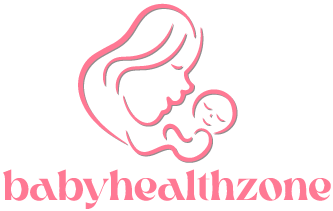
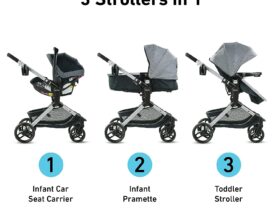

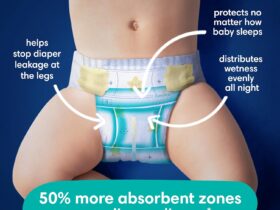
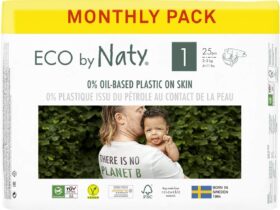

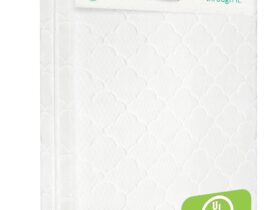
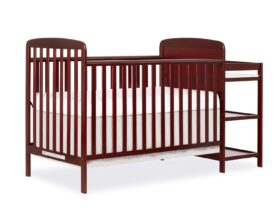
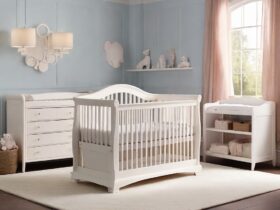
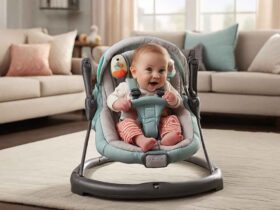

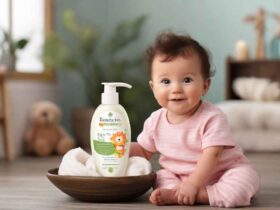
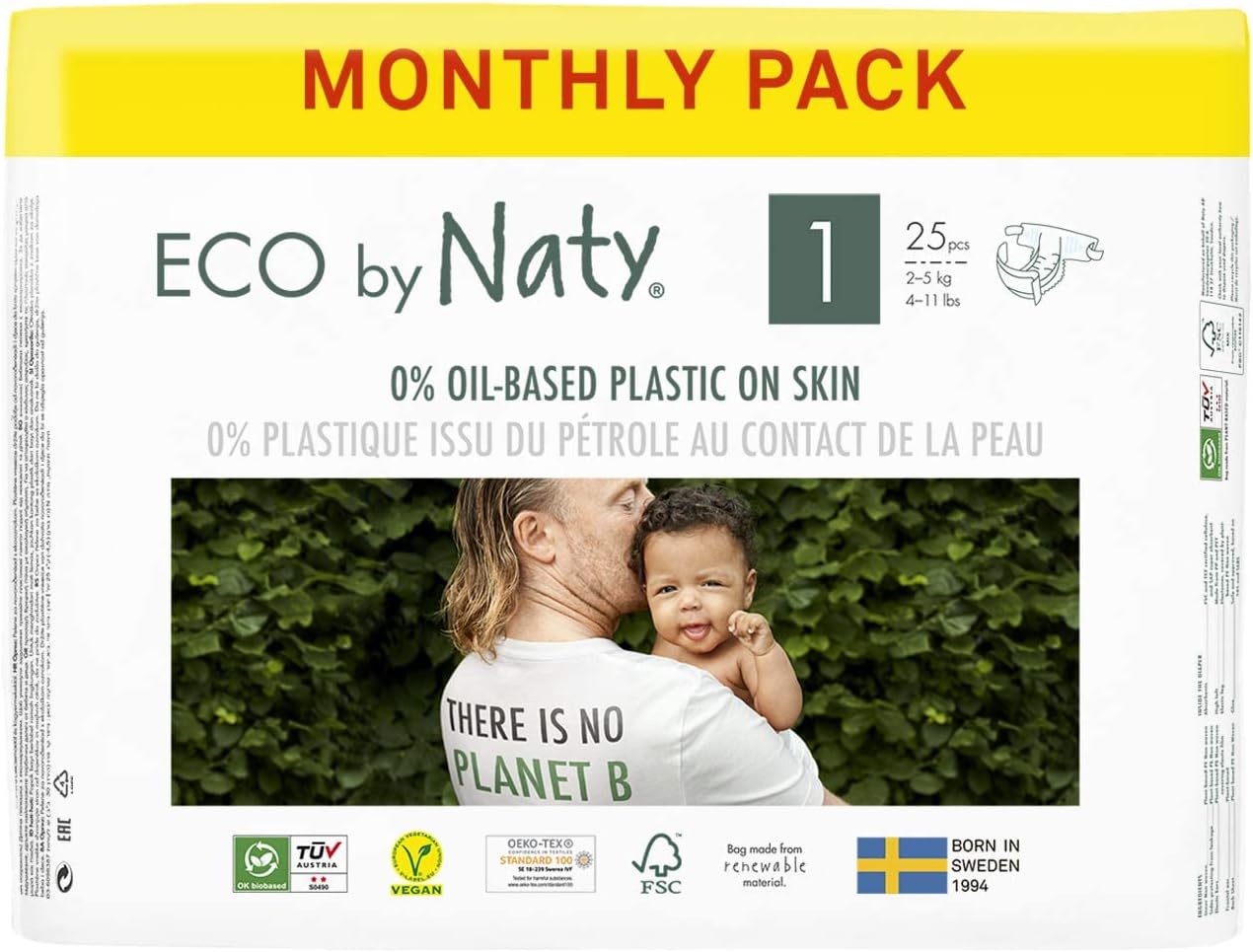
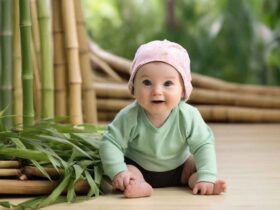
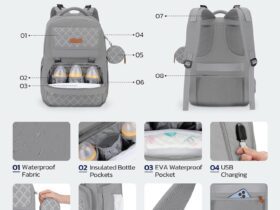
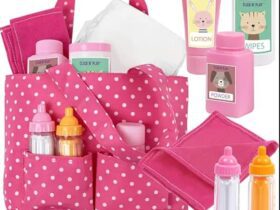
Leave a Review